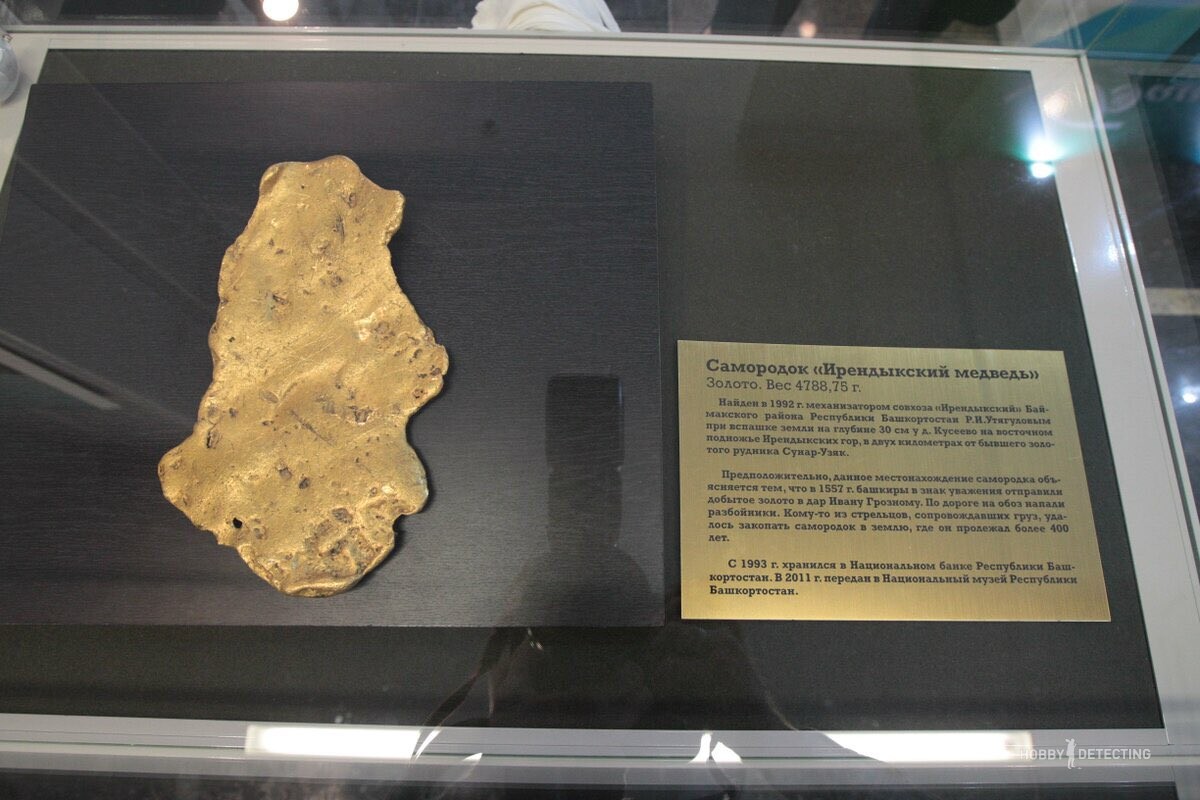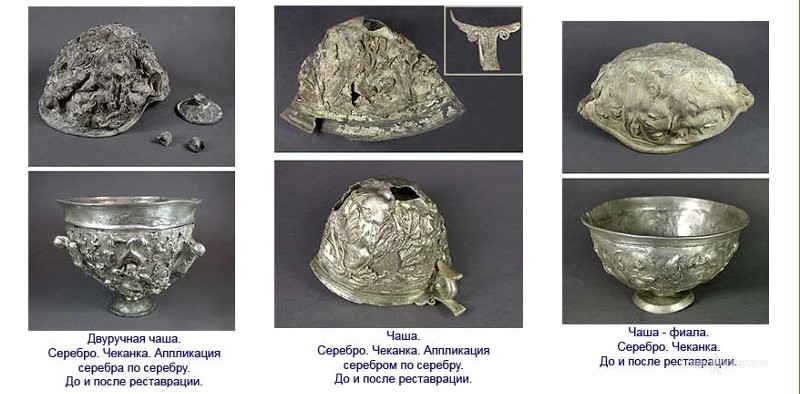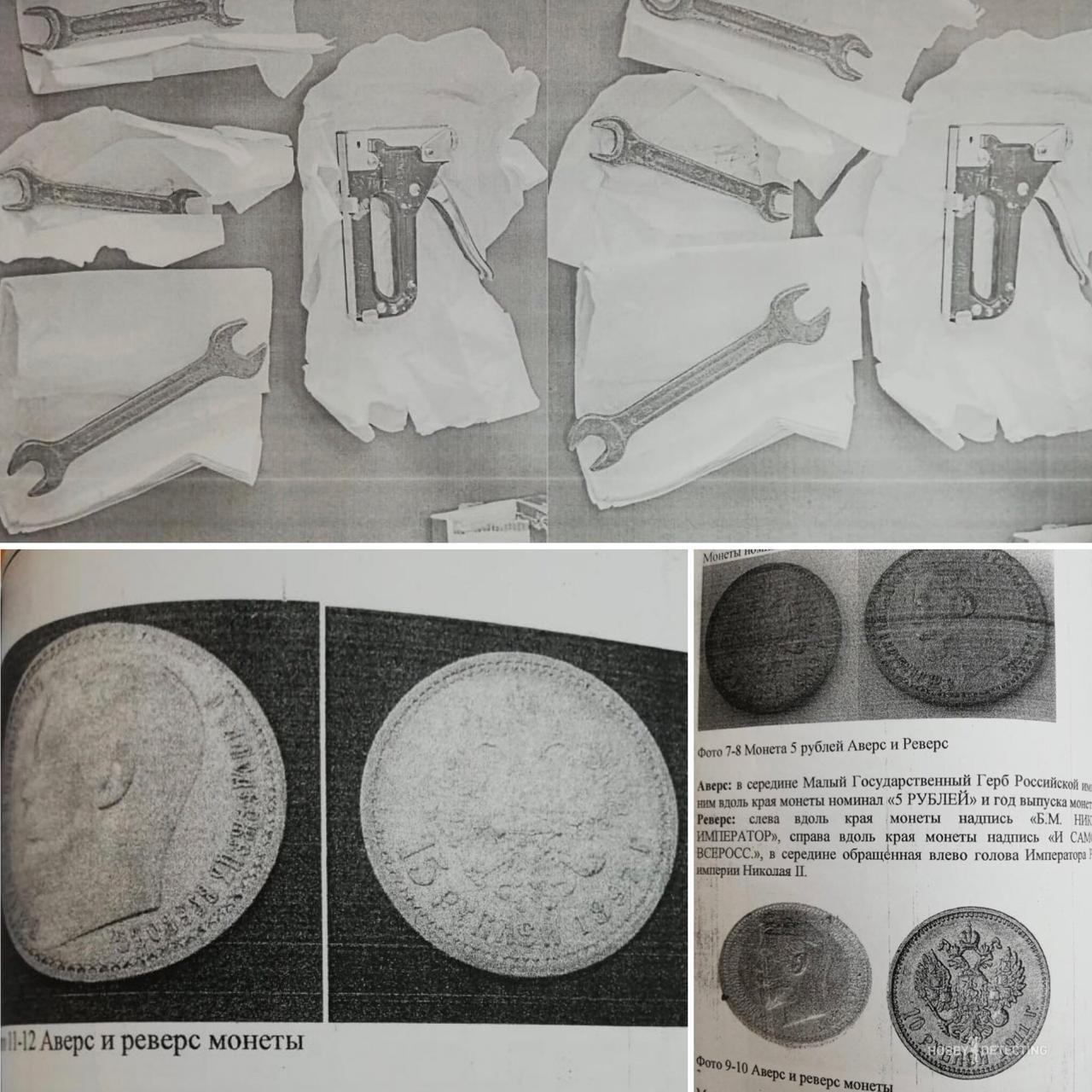Three treasures of modern Russia that never reached Gokhran
Good mood to you, dear readers of our blog.
In one of the previous posts we touched on the topic of how in the USSR Gokhran accepted treasures from the population. While working on the material, I found one very interesting interview. The Moskovsky Komsomolets correspondent managed to talk with one of the Gokhran veterans, the head of the planning and release of jewelry department, Vyacheslav Ivanov. Very interesting material, I recommend reading it. So, during the conversation, a Gokhran employee said that until 1991, the USSR Gokhran annually accepted up to HUNDREDS of treasures from the population annually. From forty to fifty kilograms of gold coins alone were received annually .
And so, after 1991 and until 2012 (date of publication of the interview), the Gokhran of the Russian Federation did not receive NONE treasure. I think this news will not surprise anyone. Especially for those who, at a conscious age, experienced the dashing 90s. Why was it necessary to hand over treasures to the state for a probable quarter of the reward? When in every market, at a metro station, in an underground passage or at a bus station, gold and silver were freely bought up at a nominal, market price.
However, in the modern history of Russia there are many examples when careless citizens who found treasure had these treasures confiscated. Only now, the treasures did not reach Gokhran. There are really many such stories, and in this article I propose to analyze the three most famous of them. All these stories at one time made a splash in the information space, and therefore they can be analyzed in great detail.
Irendyk bear.This story took place in 1992, and therefore part of the real story about this treasure is hidden under a thick layer of newspaper articles reeking of yellowness, tabloidism and sensationalism in the style of “Stalin was born in a secret laboratory on Mars.” It was a fun time, then people still knew how to unconditionally believe everything, what is written in the newspaper. After all, newspapers never lie.
What can you tell about this story so as not to slide down to the floor with the alternatives??? In 1992, a tractor driver from the village of Kuseevo, Baymaksky district, Republic of Bashkortostan, named Radik Utyagulov, found a plate while plowing a field yellow color of uneven shape. After twirling his hands, the tractor driver decided that it was a melted piece of brass. He threw this piece of iron on the floor of the tractor, maybe it would come in handy on the farm. So a piece of incomprehensible yellow metal rolled around in the tractor for a couple of weeks. Until his uncle suggested that Radik check whether it was gold? Why did they break the thermometer and spill mercury on the “remelting”? A chemical reaction with white spots confirmed his uncle’s guess. It turned out to be a gold nugget.

Radik again took the nugget to the tractor, but this time he attached it to the panel under the windshield. The tractor did not close, but who needed it. However, soon a rumor quickly spread throughout the village that Radik had a gold nugget weighing several kilograms. The local district police officer responded to the signal from vigilant citizens and after a short conversation with Radik, the district police officer withdrew the nugget under the protocol. The weight of the nugget was 4 kg. 788 gr.

Radik Utyagulov and that same tractor
The gold was taken to Ufa and transferred to the state bank of the Republic of Bashkortostan. According to the law that existed at that time, the nugget had to be sent to Moscow and transferred to Gokhran. However, taking advantage of the legislative leapfrog and parade of sovereignties, the Kurultai of Bashkortostan promptly adopted a separate law stating that this nugget, named after the place of discovery and shape — The Irendyk bear is recognized as a national treasure of the Republic of Bashkortostan. That’s why it was left in the vault of the State Bank of the Republic. In 2011, the State Bank transferred the nugget for exhibition to the Republican National Museum.
And what did the tractor driver Radik get for his find??? Since they refused to hand over the find to Gokhran, Radik Utyagulov was denied any payments at all. Moreover, they explained, they say, say thank you for not imprisoning me. However, after the uproar in the press, it was decided to give out some kind of bonus. As Radik himself said, the money given to him was enough to buy used Zhiguli cars.
In 2011, the Irendyk bear nugget was valued at 11 million rubles. Which at the dollar exchange rate was approximately $333,000. I think this is an example of the most expensive Zhiguli car in the history of AvtoVAZ (irony)
The “Argonauts” treasure. Well, like the Argonauts??? I think the Argonauts would be very surprised to learn that they there is a treasure of them. The treasure got its name for the same reason – the media’s love for loud and catchy headlines. You haven’t heard the story about the Ryazan Amazons yet. But, oh well, let’s get to the point.
In 1997, FSB officers in the city of Sochi received operational information that a certain citizen was walking around the antique shops of the city and offering for sale a whole bag of antique silver dishes. The citizen was quickly identified and detained. The items he managed to sell were confiscated from antique dealers. It was not possible to return anything from the general collection. But, during a search in the house at the place of residence, they found many more interesting antique objects. Like Scythian swords or a bronze helmet.

A 26-year-old resident of the Sochi district, Andrei Chamkin, was detained. Using a metal detector, he searched for ancient objects in the surrounding mountains, and then one day he was lucky and dug up a treasure consisting of 26 objects. As we already understood, he was caught trying to sell this treasure.
According to the law, this treasure, after seizure, had to be sent to Gokhran. But this did not happen, and then the press differed in versions. According to one version, items from the treasure were bought by the director of the museum from persons who managed to purchase these items. It doesn’t say where the museum got that kind of money, and it also doesn’t specify how much or how much the items were bought for. According to another version, the entire complex of objects, the so-called treasure of the Argonauts, was framed as archaeological objects. Why, an archaeological expedition was sent to the place where the treasure was discovered.
The fact is that that same expedition found nothing in the area where the treasure was discovered. But versions were put forward that there was probably an ancient sanctuary or fortification or the estate of a wealthy Greek settler in that place. The fact that archaeologists were never able to discover the archaeological object is also evidenced by the fact that there is still debate about the dating of the treasure itself. And these items received their name “treasure of the Argonauts” from the light hand of one of the historians of the city of Sochi. He, in an interview with journalists, stated that this treasure is clearly and undoubtedly from the era when these fertile lands were visited by the Argonauts.

Let us miss the stories that then appeared in the local media about the curse of the treasure, in the style that the entire family of the treasure hunter died, the archaeologists went blind, and the spirits of those same Argonauts now walk through the halls of the museum. And let’s try to figure out what the treasure hunter himself, besides a suspended sentence, received from his find? We can assume that he was able to earn a little extra money from partially sold items. Although, if you take into account his education in the 9th grade and vocational school, you can be sure that they paid him no more for antique dishes than for modern Khokhloma.
The same Kursk treasure. I am sure that the vast majority of our readers have at least once, at least half an ear, at least a little, heard the story about a resident of Kursk who was sued for a treasure of golden “grandmother’s” chervonets that disappeared in the department of the Ministry of Internal Affairs. However, I propose to look at this story from a slightly different angle. Moreover, you will find out what the journalists tried to keep silent about, so as not to remove from this story the aura of someone offended by the authorities.
And so, in 2013, operational employees of the criminal investigation department in the city of Kursk received information that a certain citizen was walking around the local market and trying to sell several gold coins. (It seems that I already wrote something similar today somewhere) The citizen was detained, interrogated and found out that he still had gold coins at home, which he was ready to voluntarily surrender. The extent to which this desire was voluntary is unknown, since during subsequent trials, Alexander Snegirev repeatedly changed his testimony. In particular, he stated that in fact, he found the treasure back in 2007 (because it was then that he was renovating the house) And then the coins lay there unnecessarily and only in 2013 he decided to go to the market and find out the value of the coins. there was no word for sale at all..

That’s okay. We’ll skip that. But I think it’s worth examining how the police officers acted in this situation. The fact is that they really could then, under several articles at once, bring this case to the confiscation of the treasure and an administrative or criminal charge for citizen Snegirev himself. As it happens, read an example of the Argonauts’ treasure or a note in our blog about the treasure of Kufic dirhams in the Ryazan region.
However, police officers register the treasure exactly as a treasure with the preservation of all property rights and the absence of offenses. By the way, they accepted this treasure according to the manual from the Soviet period. (namely, after this incident, the Ministry of Internal Affairs issued an order prohibiting the acceptance of treasures from the population) The treasure was accepted and handed over to the evidence storage facility, a notice was sent to Gokhran and the treasure was sent to Moscow using the nearest special transport from the FSO. Well, the rest of the story is known. The treasure was stolen while it was in the evidence storage room. And a package arrived at Gokhran, which contained a wrench and a construction stapler. The internal investigation was unable to find the culprit; several people had access to the storage facility.
What was the result? Alexander Snegirev received compensation from the Kursk Region Treasury in the sum of the price by weight of gold of the stolen coins. Well, we lost the opportunity to find out what would have happened with the actual delivery of the real treasure to Gokhran. It is likely that Gokhran specialists would not have found cultural and historical value in those coins, and then citizen Snegirev would have fully and legally become the owner of his treasure. But, this is just a theory. So we can only wait, maybe through Gokhran the information will reach our responsible officials that the existing norms and laws regarding treasures, treasure hunters and treasure hunting in general do not work at all.
Meanwhile, in 2019, more than 1,300 treasures were reported discovered in the UK.
